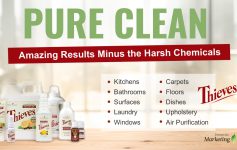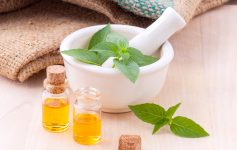I just completed a blog on essential oils and discussed the various mechanisms of hormonal modulation. Specifically, I reviewed the that the dosage and concentration of an essential oil, its constituents (which can contain phytoestrogens), and the overall “hormonal environment,” all have an impact on how they affect our hormones and overall wellness. I also detailed the three major modes of action of essential oils.
Awhile back, there was a loud buzz going around regarding the use of lavender essential oil causing breast development in boys. The NIH reported:
The three otherwise healthy Caucasian boys, ages four, seven and 10 years, had normal hormonal levels when they were diagnosed with gynecomastia by Clifford Bloch, M.D., in Colorado. All had either used lavender-scented soap and skin lotions, or shampoos or styling products that contained tea tree oil and lavender oil as ingredients. In each case, several months after the suspected products were discontinued, the gynecomastia had subsided or resolved.
Here’s the deal? Do you see the key words in this sentence? I’ve bolded them for you:
All had either used lavender-scented soap and skin lotions, or shampoos or styling products that contained tea tree oil and lavender oil as ingredients
Let’s review the three cases in the actual study.
Case I
Although it was reported this child “had no exposure to any known exogenous form of estrogens (ingestants, salves, or ointments). His height and weight were at the 97th percentile…” However, later on it was found that the boy had been using a healing balm containing lavender.
Case Two
This patient case was related to shampoo that contained lavender and tea tree. Again, this boy had a body and weight index over the 97% percentile.
Case Three
This boy was in the 50% percentile of weight with a history of “lavender-scented soap, and intermittent use of lavender-scented commercial skin lotion.”
Here’s the thing… in all three cases, the “estrogen” environment may have been higher than normal and related to obesity and use of products that probably contained endocrine disruptors.
Although the study determined that “pure essential oils” did increase estrogen activity in cellular lines, the essential oils were said to be purchased from a manufacturer that sourced the oil as “synthetic” and the type of tea tree was not specified. This makes correlation of the findings to quality essential oils unsubstantiated.
Therefore, the conclusion I’ve come to from these three cases is:
Boys using commercial products with essential oils might be sensitive to endocrine disruptors. Furthermore, essential oils drive these chemicals into the skin more effectively because they act as delivery systems. This is why I do not recommend applying quality essential oils over synthetic and chemically produced products.
Lesson Learned
Use only quality essential oils and use them wisely.
Disclaimer:
This information is applicable ONLY for therapeutic quality essential oils. This information DOES NOT apply to essential oils that have not been tested for purity and standardized constituents. There is no quality control in the United States, and oils labeled as “100% pure” need only to contain 5% of the actual oil. The rest of the bottle can be filled with fillers and sometimes toxic ingredients that can irritate the skin.
This material is for information purposes only and is not intended to diagnose, treat, or prescribe for any illness. You should check with your doctor regarding implementing any new strategies into your wellness regime. These statements have not been evaluated by the FDA.



